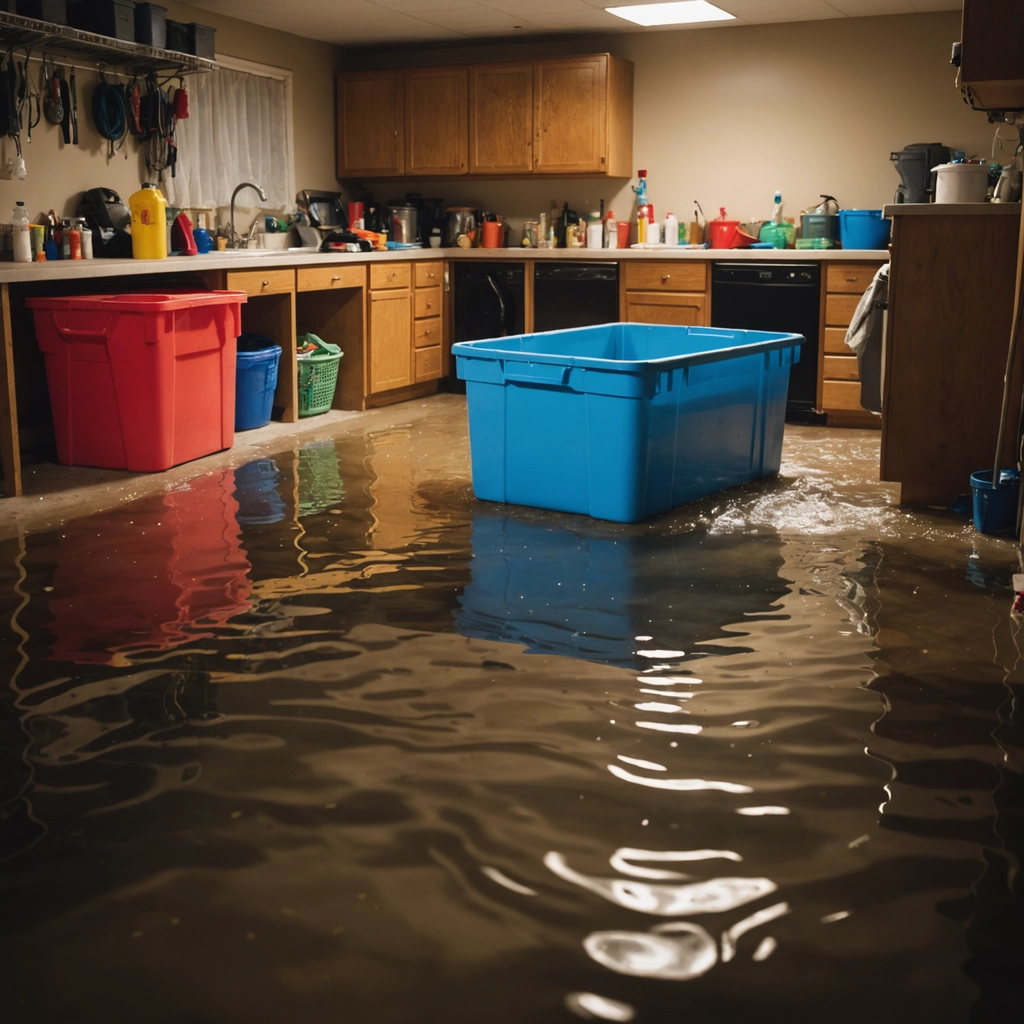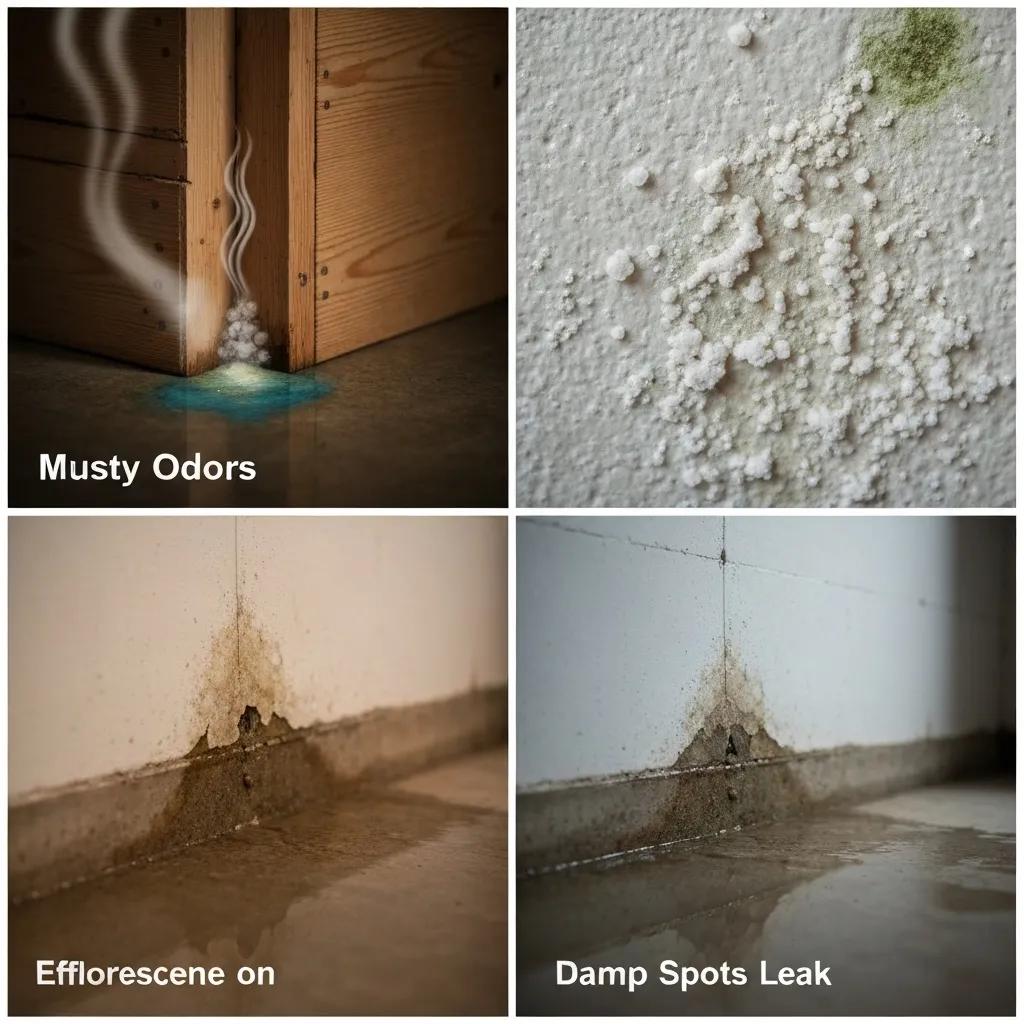Basement Water Leak Repair

Basement Water Leak Repair: Your Complete Guide to Causes, Solutions, Costs, and Prevention
Did you know that up to 98 percent of basements in the U.S. experience some form of water intrusion? This can seriously compromise your home’s structure and the air you breathe.
This statistic highlights just how common basementwaterleaks are across the United States.
This in-depth guide to basementwater leak repair is designed to empower both homeowners and business owners. We’ll walk you through the tell-tale signs to look for, the underlying causes you need to address, effective repair methods, what to expect regarding costs, and crucial prevention strategies—all backed by our 24/7 expert support. You’ll learn about identifying mold and efflorescence, understanding the forces of hydrostatic pressure and foundation cracks, exploring interior and exterior waterproofing options, factoring in local costs in Nashville and Murfreesboro, and implementing long-term maintenance plans. Discover why 24 Hour Flood Fighters’ immediate, round-the-clock service and certified professionals offer the most dependable defense against recurring leaks.
What Are the Common Signs of Basement Water Leaks?

Spotting the early signs of basementwaterleaks is crucial for protecting your walls, floors, and indoor air quality, allowing for swift action and effective mold prevention.
Before you see actual flooding, keep an eye out for these warning signals:
- A musty smell or visible mold growth, especially in corners or near your HVAC system.
- White, powdery residue known as efflorescence appearing on concrete block or poured concrete walls.
- Damp patches, paint that’s peeling, or baseboards that look warped around the edges of your floor.
- Water pooling in the cove joints where the wall meets the floor, particularly after heavy rain.
- Dark stains or streaks on your walls, indicating a history of water seepage.
Recognizing these clues helps pinpoint the problem and prepares you to select the most suitable repair solution.
How to Detect Musty Odors and Mold Growth in Your Basement
Musty odors and visible mold are clear indicators of high humidity and decaying organic matter, signaling active moisture intrusion and potential health hazards. Start by sniffing around all corners and near ductwork for that tell-tale mildew scent, then carefully inspect wall joints and areas behind furniture for fuzzy discoloration. A handheld moisture meter can help confirm hidden dampness. Catching mold early prevents structural damage and protects your indoor air quality before you even tackle wallefflorescence.
What Does Efflorescence on Basement Walls Indicate?
Efflorescence shows up as white, powdery deposits on masonry surfaces, a sign that water is seeping through porous concrete and carrying dissolved salts from within the wall. This crystallization points to ongoing moisture migration and compromised waterproofing, which can accelerate damage from freeze-thaw cycles. Observing where efflorescence appears helps identify the most vulnerable sections of your wall and guides whether interior sealants or a drain tile system is the better choice.
How to Recognize Damp Spots, Pooling Water, and Wall Stains
Damp spots, standing water, and dark wall stains are definitive signs of active waterinfiltration, often caused by hydrostatic pressure overwhelming your current drainage. Look for discolored patches on concrete floors, wood trim that’s starting to warp, or bubbling paint. Noticing these patterns helps you zero in on the exact leak source—whether it’s a foundation crack, a failed cove joint, or an overflowing gutter—so you can plan an effective repair strategy.
What Causes Basement Water Leaks? Understanding Key Factors
Basementwaterleaks typically stem from hydrostatic pressure, cracks in the foundation, inadequate exterior drainage, plumbing issues, or water backing up in window wells, all of which compromise your basement‘s moisture barrier.
Here’s a breakdown of common leak causes and their effects:
| Cause | Primary Mechanism | Effect |
|---|---|---|
| Hydrostatic Pressure | Groundwater pushes against the foundation | Water forced through porous materials |
| Foundation Cracks | Settlement or shrinkage creates openings | Direct water entry into basement walls |
| Poor Exterior Drainage | Clogged gutters and improper grading concentrate water | Soil saturation against foundation walls |
| Plumbing Leaks | Ruptured or corroded pipes release water internally | Localized dampness and mold growth |
| Window Well Overflow | Uncovered or blocked wells channel rainwater | Surface water flooding into the basement |
Understanding these factors helps you determine the best place to implement targeted waterproofing or repair solutions.
How Does Hydrostatic Pressure Lead to Basement Leaks?
Hydrostatic pressure builds up when groundwater rises around your foundation, forcing water through tiny pores and cracks in the concrete, leading to persistent dampness. Heavy rain and high water tables intensify this pressure. Recognizing this pressure-driven mechanism underscores the importance of interior drainage systems or exterior waterproofing to manage soilmoisture effectively.
What Role Do Foundation Cracks Play in Water Intrusion?
Cracks in your foundation act as direct entry points for water, weakening the structural barrier and allowing continuous seepage. These cracks can form due to soil settlement, freeze-thaw cycles, or concrete shrinkage. Identifying the type of crack—whether horizontal, vertical, or stair-step—guides the choice of repair methods, such as epoxy injection or underpinning.
How Can Poor Exterior Drainage and Window Wells Cause Leaks?
When your yard slopes toward the house, gutters are clogged, or the soil around your foundation stays saturated, water is directed right to your foundation walls. Similarly, window wells that aren’t covered or are filled with debris can act like funnels for rainwater. Ensuring proper grading and extending downspouts away from the house helps manage surface water. Installing covers on window wells and maintaining trench drains prevents overflow and reduces the risk of wall saturation.
How Do Plumbing Leaks Contribute to Basement Water Problems?
Leaky pipes hidden within walls or under floors can release water directly into your basement, creating damp spots and encouraging mold growth. Issues like corroded joints, frozen pipes, or small pinhole leaks often require professional detection tools, such as thermal imaging cameras. Addressing these internal plumbing failures eliminates ongoing moisture sources and complements any structural repairs you might need.
What Are the Most Effective Basement Water Leak Repair Solutions?
Effective basementwater leak repair strategies include installing interior drain tile systems, applying exterior waterproofing membranes, setting up sump pumps, performing crack injections, and using specialized sealants to ensure your foundation is completely protected and watertight.
Here’s a comparison of these key services:
| Repair Method | Application | Benefit |
|---|---|---|
| Interior Drain Tile System | A perimeter trench with perforated pipe and gravel | Effectively relieves hydrostatic pressure |
| Exterior Waterproofing Membrane | Excavation and application of a membrane to the exterior wall | Blocks soil moisture right at the source |
| Sump Pump Installation | A pump and basin system installed at the lowest point of the floor | Actively removes and discharges water |
| Crack Injection | Injecting epoxy or polyurethane into foundation cracks | Seals fissures and restores structural integrity |
| Sealants and Coatings | Surface application of masonry sealers | Provides a barrier against minor dampness |
Comparing these options helps homeowners choose the best approach for their specific leak issues and budget.
How Do Interior Drain Tile Systems Work to Stop Water Intrusion?
Interior drain tile systems collect groundwater through perforated pipes installed around the basement‘s perimeter, directing it to a sump pit. A sump pump then expels this water outside. This system intercepts subsurface water before it can reach the foundation walls, significantly reducing hydrostatic pressure and preventing further seepage.
What Are the Benefits of Exterior Waterproofing Membranes?
Exterior waterproofing membranes are robust, flexible materials applied to the outside of foundation walls after excavation. They create a seamless barrier that effectively blocks soilmoisture from penetrating the foundation. This method provides superior protection against water intrusion, minimizes long-term maintenance needs, and extends the life of your concrete by stopping water at its origin.
When Is Sump Pump Installation Necessary for Basement Protection?
Installing a sump pump becomes crucial when groundwater consistently collects in low-lying areas of your basement, or when interior drain tile systems alone aren’t enough to keep the space dry. A reliable sump pump automatically activates during heavy rainfall or snowmelt, pumping excess water away from your foundation and preventing potential basement flooding.
How Does Crack Injection Repair Foundation Leaks?
Crack injection is a precise repair method where epoxy or polyurethane resin is injected under pressure directly into foundation fissures. Once cured, the resin bonds the concrete together, filling any voids and effectively stopping water from entering. This process restores the wall‘s strength without the need for extensive excavation.
What Sealants and Coatings Are Used for Basement Waterproofing?
Sealants and coatings, such as silane-siloxane impregnators or cementitious coatings, are applied to concrete surfaces to create a barrier that prevents moisture from migrating through. They are particularly effective for managing minor dampness and can serve as an excellent supplementary protection when used alongside more comprehensive waterproofing systems.
How Much Does Basement Water Leak Repair Cost? Factors and Estimates
The cost of basement leak repair can vary significantly depending on the chosen repair method, the extent of the damage, local economic factors in Nashville and Murfreesboro, and your financing choices. Typically, standard repairs can range from $1,800 to $7,100.
This analysis provides valuable context for the cost factors discussed, such as selecting the right repair method and assessing the severity of the damage.
Key factors influencing the cost include:
- Repair Method Selection – Interior systems generally range from $3,000 to $10,000, while exterior membranes can cost between $6,000 and $15,000.
- Damage Extent – Significant issues like structural underpinning or full excavation can push costs well over $10,000.
- Location-Specific Rates – Labor costs and soil conditions unique to Tennessee can increase overall budgets by 10–20%.
- Financing Options – Utilizing home equity lines, contractor payment plans, or specialized loans can help spread out payments and ensure timely repairs.
Understanding these cost drivers is essential for effective planning and budgeting for your waterproofing project.
What Repair Methods Affect Basement Waterproofing Cost?
The choice of repair method—whether it’s an interior drain tile system or an exterior membrane—directly impacts material, labor, and excavation expenses. Sometimes, trenchless repair options can offer savings by minimizing disruption to landscaping.
How Does the Extent of Damage Influence Repair Expenses?
What Are the Common Signs of Basement Water Leaks?
Extensive foundation damage that requires underpinning or major excavation significantly increases labor, material, and restoration costs. Addressing issues early is almost always more cost-effective than waiting for extensive reconstruction.
Are There Location-Specific Costs for Nashville and Murfreesboro?
The specific soil composition, common clay substrates, and typical rainfall patterns in the Nashville and Murfreesboro areas can lead to project costs that are 10–20% higher than national averages, reflecting the need for specialized excavation and drainage solutions.
What Financing Options Are Available for Basement Leak Repairs?
Homeowners have several financing avenues available, including home equity lines of credit, customized payment plans offered by contractors, or government-backed home improvement loans, ensuring that necessary repairs can be completed without delay.
How Can You Prevent Future Basement Water Leaks? Maintenance and Solutions
Preventing future basementwaterleaks involves proactive maintenance, such as ensuring proper landscape grading, managing your gutters effectively, designing strategic drainage, and regularly servicing your sump pump.
Follow these essential preventive steps:
- Maintain a slope of at least 6 inches away from your foundation walls to direct rainwater runoff effectively.
- Clean your gutters regularly and ensure downspouts extend at least 5 feet away from the house.
- Inspect and seal any exterior wall penetrations and utility entry points annually.
- Check your window wells for debris and consider installing covers to block rainwater and leaves.
- Test your sump pump every quarter and replace batteries or backup systems as needed.
What Home Maintenance Tips Reduce Basement Water Intrusion?
Consistent maintenance, like clearing gutters, ensuring your yard slopes away from the house, and sealing visible cracks in masonry, helps prevent water from pooling against your foundation and seeping into your basement.
How Does Proper Drainage System Design Prevent Leaks?
A well-designed drainage strategy, incorporating sloped terrain, French drains, and efficient gutter systems, effectively channels excess water away from your foundation. This significantly reduces hydrostatic pressure and minimizes the long-term risk of water seepage.
Why Is Regular Sump Pump Maintenance Important?
Regularly testing your sump pump, cleaning its intake screen, and verifying that the discharge line is clear ensures it will operate reliably during heavy rains or snowmelt, protecting your basement from sudden flooding.
Why Choose 24 Hour Flood Fighters for Basement Water Leak Repair in Nashville and Murfreesboro?
24 Hour Flood Fighters offers 24/7 emergency response, deep local knowledge of Nashville and Murfreesboro’s soil and climate, IICRC-certified technicians, and integrated mold remediation services to provide comprehensive basementwater leak repair and lasting peace of mind.
Our key advantages include:
- 24/7 Emergency Response: We minimize water damage and mold risks by taking immediate action, day or night.
- Local Knowledge: Our understanding of Nashville and Murfreesboro’s specific geology allows us to develop tailored drainage and waterproofing strategies.
- Certified Technicians: Our team holds IICRC credentials and possesses extensive restoration experience.
- Holistic Services: We seamlessly combine leak repair, water damage restoration, and mold remediation for a complete solution.
What Makes 24 Hour Flood Fighters’ 24/7 Emergency Response Unique?
Our commitment to being available around the clock means we can contain leaks before they worsen, significantly reducing structural damage and the spread of mold through rapid mitigation.
How Does Local Knowledge Improve Repair Effectiveness?
Our in-depth familiarity with Tennessee’s claysoil, seasonal freeze-thaw cycles, and typical rainfall patterns enables us to implement the most effective drainage designs and select the best waterproofing materials for your property.
What Certifications and Experience Do Our Technicians Have?
Our technicians are IICRC certified, hold state restoration licenses, and bring years of specialized service experience, equipping them to handle complex leaks and execute advanced repair methods with precision.
How Do We Integrate Mold Remediation and Water Damage Restoration?
By coordinating mold remediation and water damage restoration services, we address both the moisture intrusion and any resulting microbial contamination, ensuring a healthy indoor environment and preventing future issues.
What Are Frequently Asked Questions About Basement Water Leak Repair?
How Do You Fix a Basement Water Leak Quickly and Effectively?
To fix a basementwater leak swiftly, first locate the source. Then, use hydraulic cement to seal visible cracks, install an interior drain tile system with a sump pump, and improve exterior grading to prevent further water entry.
What Is the Cheapest Way to Fix a Leaky Basement?
For minor cracks, the most budget-friendly solution often involves using hydraulic cement or DIY sealant coatings, extending gutter downspouts, and implementing temporary interior drainage until a full waterproofing system can be installed.
Who Should You Call for Basement Leak Repair Services?
You should contact specialized water damage restoration professionals who offer 24/7 emergency services and possess local expertise in Tennessee to ensure prompt assessment and effective, long-lasting solutions.
What Are the Early Signs of Basement Water Damage?
Early indicators of water damage include musty odors, efflorescence on walls, damp patches, and subtle discoloration, often appearing long before any visible flooding occurs.
How Long Does Basement Leak Repair Usually Take?
Most basement leak repair projects are completed within one to five days, depending on the complexity of the method used, the extent of the damage, and weather conditions, allowing adequate time for curing and testing.
Basementwaterleaks require prompt identification and precise repair to safeguard your home’s structure and your family’s health. By recognizing the early warning signs, understanding the root causes, selecting the right repair solutions, budgeting wisely, and implementing preventive measures, you can ensure your basement stays dry all year round. For immediate, expertbasementwater leak repair services in Nashville and Murfreesboro, reach out to 24 Hour Flood Fighters and protect your property today.

